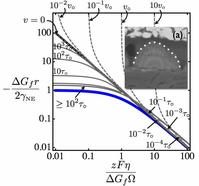Dendrite Suppression to Curtail Lithium-Ion Battery Failure

In the context of the recent 787 incident, which brought to the attention of the general public the reliability challenges in current Lithium-Ion Battery technology, Dr. David Ely and Prof. R. Edwin García have identified the different ways in which Li-ion batteries can develop dendrites during recharge. The formation of these defects is of great importance because its nucleation precedes internal short-circuiting and even battery ignition.
Fundamentally, the performed research proposes a Universal roadmap to allow experimentalists and theoreticians alike to explore the different regimes of behavior during battery recharging, and enables researchers to identify the charging conditions that will favor complete suppression (or at least minimization) of lithium aggregates. The work readily explains available in situ experimental data and reconciles conflicting existing theories as they were reported during the 1990s and early 2000s. While the developed theory is emphatically applied to Li-ion batteries, it was formulated so that it could be readily applied to other emerging battery chemistries, such as Mg- and S-ion batteries.
Additional details can be found at: http://jes.ecsdl.org/content/160/4/A662
More on R. Edwin García's battery modeling group can be found at: http://www.redwingresearch.org/research/electrochemistry
and also at: https://engineering.purdue.edu/MSE/Research/Areas/Batteries/index.html
Contact: R. Edwin García (redwing@purdue.edu)
